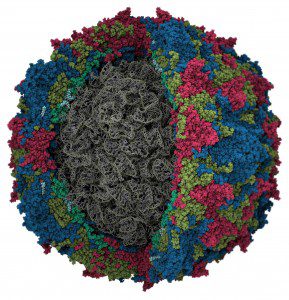

The polio eradication and endgame strategic plan announced by the World Health Organization in 2014 includes at least one dose of inactivated poliovirus vaccine (IPV). Since 1988, when WHO announced the polio eradication plan, it had relied exclusively on the use of oral poliovirus vaccine (OPV). The rationale for including a dose of IPV was to avoid outbreaks of vaccine-derived type 2 poliovirus. This serotype had been eradicated in 1999 and had consequently been removed from OPV. However IPV, which is injected intramuscularly and induces highly protective humoral immunity, is less effective in producing intestinal immunity than OPV. This property was underscored by the finding that wild poliovirus circulated in Israel during 2013, a country which had high coverage with IPV. Furthermore, in countries that use only IPV, over 90% of immunized children shed poliovirus after oral challenge. I have always viewed this shortcoming of IPV as problematic, in view of the recommendation of the World Health Organization to gradually shift from OPV to IPV. Even if the shift to IPV occurs after eradication of wild type polioviruses, vaccine-derived polioviruses will continue to circulate because they cannot be eradicated by IPV. My concerns are now mitigated by new results from a study in India which indicate that IPV can boost intestinal immunity in individuals who have already received OPV.
To assess the ability of IPV to boost mucosal immunity, 954 children in three age groups (6-11 months, 5 and 10 years) were immunized with IPV, bivalent OPV (bOPV, containing types 1 and 3 only), or no vaccine. Four weeks later all children were challenged with bOPV, and virus shedding in the feces was determined 0, 3, 7, and 14 days later. The results show that 8.8, 9.1, and 13.5% of children in the 6-11 month, 5-year and 10-year old groups shed type 1 poliovirus in feces, compared with 14.4, 24.1, and 52.4% in the control group. Immunization with IPV reduced fecal shedding of poliovirus types 1 (39-74%) and 3 (53-76%). The reduction of shedding was greater after immunization with IPV compared with bOPV.
This study shows that a dose of IPV is more effective than OPV at boosting intestinal immunity in children who have previously been immunized with OPV. Both IPV and OPV should be used together in the polio eradication program. WHO therefore recommends the following vaccine regimens:
- In all countries using OPV only, at least 1 dose of type 2 IPV should be added to the schedule.
- In polio-endemic countries and in countries with a high risk for wild poliovirus importation and spread: one OPV birth dose, followed by 3 OPV and at least 1 IPV doses.
- In countries with high immunization coverage (90-95%) and low wild poliovirus importation risk: an IPV-OPV sequential schedule when VAPP is a concern, comprising 1-2 doses of IPV followed by 2 or mores doses of OPV.
- In countries with both sustained high immunization coverage and low risk of wild poliovirus importation and transmission: an IPV only schedule.
Type 2 OPV will be gradually removed from the global immunization schedules. There have been no reported cases of type 3 poliovirus since November 2012. If this wild type virus is declared eradicated later this year, presumably WHO will recommend withdrawal of type 3 OPV and replacement with type 3 IPV.
All 342 confirmed cases of poliomyelitis in 2014 were caused by type 1 poliovirus in 9 countries, mainly Pakistan and Afghanistan. Given the social and political barriers to immunization, it will likely take many years to eradicate this serotype.

…so we should be using VLPs orally. Made in plants, preferably B-)
Pingback: An unexpected benefit of inactivated poliovirus...
I think this is a perfect example of why we need to consider what pathogen we are designing a vaccine for. It is no surprise to me that a prime-boost vaccination strategy was more effective than using one or the other. As a graduate student studying immunology, it reiterates the importance of understanding how to engineer a vaccine to elicit a protective immune response. Do you happen to know if the oral vaccine is adjuvanted?
The oral vaccine does not contain adjuvant. Both IPV and OPV were developed in the 1950s before we knew anything about prime-boost regimens. Back then multiple immunizations of the same vaccines were often used, and called boosters.
Pingback: Links to go viral – 11th January 2015 | about the little things
Good now we will soon be able to switch to polio’s new name NPAFP and there will be the big celebration on how a disease was eradicated by giving it a new name.
Iowaborn: As a student of immunology I am happy to inform that you have enrolled into a field of quacks where antibody titters are confused with immunity and anyone questioning Pharma companies is quickly booted out of the field. All the best to you.
Pingback: When Ike Trusted a New Vaccine - Trendingnewsz.com